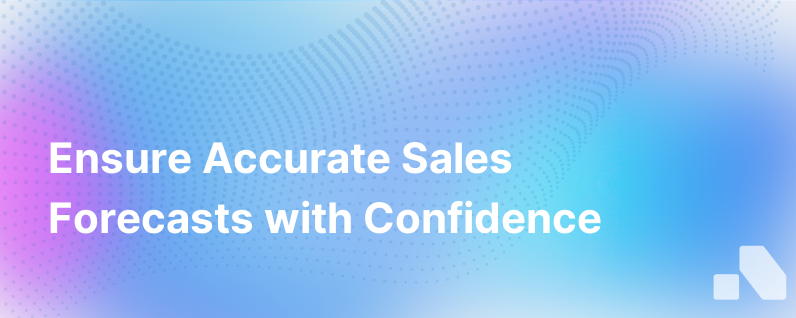
In the complex ballet of business strategy, the ability to predict the future would be akin to the ultimate ballet shoe—perfectly befitting, perpetually poised. Yet in our bound reality, forecasting is the closest proxy to foresight we possess. Trusted forecasting is not a question of convenience, but a pillar of sound business management, allowing organizations to stride confidently into the future, prepared and proactive.
Forecasting in the context of business typically involves the analysis of data and trends to predict future conditions related to sales, revenue, and other key business metrics. The more accurate and reliable a forecast, the more strategically a business can operate. The stakes attached to forecasting are high, which explains why bringing trust into your forecast is not just a good-to-have, but a must-have attribute.
The Foundation of Trust in Forecasting
Trusted forecasting rests on the combined sturdiness of data integrity, comprehensive analysis, clear communication, and software sophistication. Building trust in your forecast is a multifaceted exercise involving several best practices.
- Data Quality: Trustworthy forecasts are built on the bedrock of high-quality, accurate data. You need to ensure that your data sources are reliable and that data capture processes are robust.
- Thorough Analysis: Data without deep analysis is akin to a ship without a compass. Patterns, trends, anomalies, and correlations need to be unearthed and understood.
- Clear Communication: Clarity in how forecasts are presented and what they represent clarifies understanding among stakeholders, thus fostering trust.
- Sophisticated Tools: Leveraging advanced tools that employ machine learning and artificial intelligence can significantly enhance the accuracy and trustworthiness of forecasts.
Trusting Forecast in Action
Envision a spectrum where on one end lies guesswork and the other, trusted forecast. Enterprises progress along this spectrum with deliberate tactic and sophisticated tools like Aomni which decipher the ambivalent language of data into a narrative of future business climate. A grounded forecast becomes a compass in strategic decision-making: resource allocation, budgeting, and anticipating market changes.
The Art and Science of Balancing Prediction
Forecasting is both an art and a science. The science ensures the validity of data, the mathematical soundness of models, and the precise calibration of algorithms. The art requires a nuanced understanding of less quantitative factors, such as market conditions, consumer behavior, and global events, and integrating them into data models.
In this context, even the most sophisticated predictive models come with margins of error and an acceptance of probabilistic outcomes. Trust in forecasting, therefore, doesn't imply infallibility but the highest degree of confidence justified by data and analysis.
Mitigating Risks with Trusted Forecast
Trusted forecasts empower organizations to mitigate risks before they manifest. By identifying potential downturns, market exits, or customer churn rates, companies can preemptively strategize to address these challenges. Forecasting becomes the sentinel allowing organizations to fortify themselves against market volatility and navigate through the unpredictability with a strategic edge.
Planning and Performance: The Role of Forecast
Forecasting is central to planning. Foresight influences logistics, supply chain management, hiring practices, and many other facets of operation. Additionally, performance metrics are benchmarked against forecasts. If sales surpass forecasts, it signals triumph, but a miss can flag potential trouble, inefficiencies, or market miscalculations.
Sales Forecasting as a Keystone
Sales forecasting, in particular, holds a cardinal importance. Sales forecasts are predictively diagnostic and prescriptively strategic. As an early-warning system, they offer a prognosis on reaching sales targets, which cascades across the organization's health. Accordingly, tools tailored to sales forecasting must not only be integrated into CRM but also spearhead the aggregation and analysis of data to yield trustworthy predictions.
The Impact of Trustworthy Forecasting on Culture
Beyond strategy and mitigation, trustworthy forecasting also shapes company culture. Trust breeds confidence, and when teams have confidence in forecasts, they approach their roles with assurance and optimism. This trust shouldn't be blind; it needs to be earned repeatedly through the consistent accuracy of forecasts.
Embracing Uncertainty, Engineering Trust
It's crucial, especially in fields that deal heavily with forecasts, to embed a culture of rational optimism. It forms a positive feed-forward loop; faith in accurate forecasts inspires the collection of better data, which in turn increases forecasting precision, and so on.
Executing Trustworthy Forecasting
Executing a trustworthy forecast hinges on:
- The right data collection and validation procedures
- The employment of sophisticated analytical tools to process this data
- An understanding of the business environment context
- Providing transparent access to forecasted outcomes to relevant stakeholders
- Continuously refining the forecast with updated data and feedback
Enter Aomni
In the domain of B2B sales, tools like Aomni have become critical in sharpening the reliability of sales forecasts. Aomni's platform harnesses real-time account research and competitive insights, orchestrated through AI, to finesse the forecasting process. Consequently, your team need not belabor through the meticulous data collection and pattern analysis—Aomni distills actionable insights, delivering trusted forecasts with minimal effort from your end.
Conclusion
The ability to trust your forecast isn't just good business acumen; it is an elemental business necessity. In an unpredictable corporate landscape, a trusted forecast is the North Star by which companies navigate—a beacon that, if trusted and veritable, can be the difference between a thriving enterprise and a shipwrecked venture.
Trust isn't assumed; it's earned. Therefore, to earn trust in your forecast, invest in quality data, robust analytics, clear communication, and cutting-edge tools like Aomni. In doing so, you arm your enterprise with the foresight to make strategic decisions, mitigate risks, adapt to market dynamics, surpass performance goals, and lead with a culture defined by data-driven confidence.